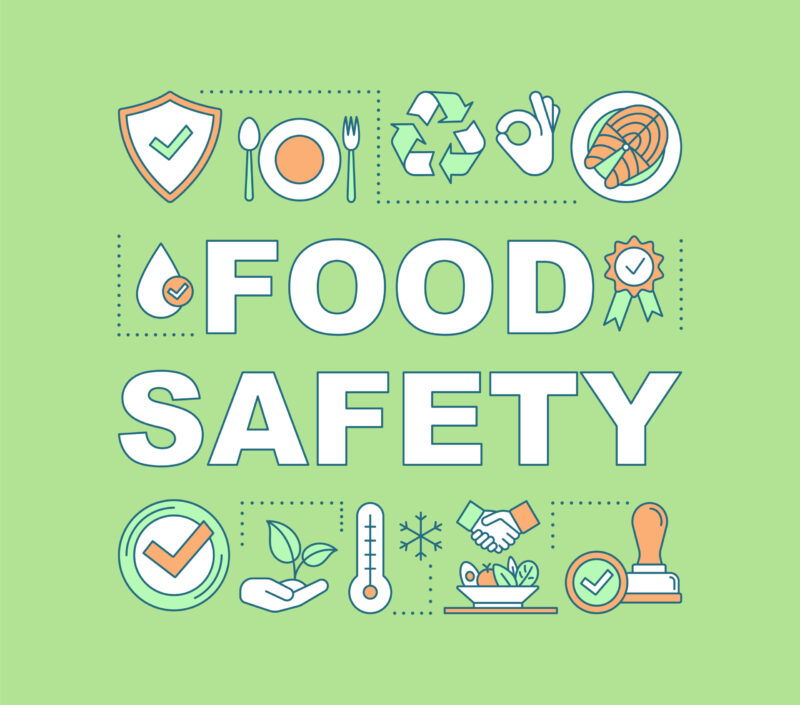Food and drink laws in the United States are crucial to ensuring safety. These regulations govern various aspects of the food system, including food safety standards, labeling requirements, and distribution protocols.
Having an understanding of these laws is important both for those employed within the food industry as well as for individual citizens. Protecting public health is reliant upon maintaining strict rules across the production, processing, and consumption of food and beverages.
It’s interesting that some cultures have certain rules active for a very long time. You can check some old practices if you click here.
Now, let’s find out more about all those rules.
Food Safety

Laws governing food safety in the United States are designed to prevent contamination and ensure edible products carry minimal risk. The Food and Drug Administration rigorously enforces these regulations to safeguard citizens’ well-being.
Facilities that process nourishment must scrupulously adhere to cleanliness and maintenance protocols. Workers follow strict hygiene guidelines— thorough hand-washing, use of protective gloves, sterilized surfaces, and devices—to reduce the introduction of unsafe elements.
Containers play a key role by shielding contents from impurities. Clear labeling offers accurate specifics so individuals can make educated choices based on needs and preferences. Packaging itself upholds scientifically determined thresholds so as not to endanger what lies within.
Labeling Requirements
Labels serve an important purpose by shedding light on what’s inside food products. Consumers need to know the ingredients, nutritional facts, and potential allergen risks. This allows people to make choices suitable to their needs.
All ingredients, whether natural or added, must be listed. This gives readers insight into what went into making the item. Knowing the formula lets folks select options aligned with their beliefs. It also helps people avoid items if they have ingredient allergies.
Nutritional metrics like calories, fats, sugars, and vitamins provide measurement context. Armed with this data, consumers can target choices supporting their dietary goals. Maybe someone is keeping an eye on their sugar intake – labels let that person assess intake amounts.
Common allergenic substances get highlighted warnings. This critical caveat protects the health of those prone to negative reactions. Packages flag staple triggers such as nuts, dairy, or gluten. The alert packaging plays a pivotal role in preventing dangerous medical events.
Distribution Laws

Ensuring safe food transport is vital. Whether domestic or imported, all products must arrive in suitable condition for consumption.
Perishables require strict temperature control during transit. Fluctuations could promote contamination and compromise integrity. Refrigeration maintains quality for susceptible items.
Foreign goods undergo a rigorous inspection to verify compliance with domestic safety standards. Thorough screenings identify potential risks before distribution. This protective screening deters public health issues arising from other regions.
Judicious processes from origin to endpoint are integral for preserving product safety. Diligence across the supply chain helps guarantee nutritional integrity from producers to the populace. Sound distribution protocols cultivate consumer assurance.
Food Additives and Preservatives
Substances added to enhance foods undergo extensive review prior to consumer use. Whether coloring, flavoring, or preserving ingredients, all undergo rigorous scientific assessment.
Independent research thoroughly examines potential health impacts. Only after review of testing data will regulatory approval be considered. This confirms any risks are appropriately mitigated.
Additives like dyes and preservatives frequently used must adhere to approved limits and dosage guidance. Ongoing oversight aims to uphold safety standards as innovation continues.
Organic Food Regulations

Maintaining standards in organic production is important to ensure confidence in the market. The USDA oversees the process through impartial inspection and verification.
For a product to be labeled organic, it must undergo certification. This involves authorized inspectors verifying no synthetic pesticides, fertilizers, or GMOs were used in production. Their approval confirms the item was grown or made using only approved organic practices.
Clear labeling is also required. Products consisting entirely of organic ingredients can be labeled 100% organic. Those with at least 95% organic components can use the term organic. This transparency enables consumers to choose foods that align with their preferences.
Constant adherence to certification standards is expected throughout the supply chain, from farms to distribution. Routine auditing aims to protect consumers who seek organic options from deceptive claims or blending. Eligibility is confirmed solely based on specified criteria, free of bias.
The goal is to ensure that any items marketed as organic truly satisfy necessary production processes and composition requirements.
GMO’s
Regulation of genetically modified organisms ensures all new developments undergo intensive safety testing by independent experts. Only through comprehensive evaluation of potential risks can approvals be granted.
Like any novel ingredients or processes, GMOs must clear rigorous analysis before being used in commercial products. Thorough vetting leaves no question unanswered regarding impacts on consumer health.
Clear labeling requirements provide transparency so people are fully informed of what is present. Mandated identification empowers each individual to decide on purchases as their preferences dictate.
Food Recalls

Sometimes foods need to be removed from stores quickly if issues come up. When contamination or safety problems are found, those products get pulled fast. The FDA works with companies to remove anything dangerous from shelves and homes to prevent sickness.
Recalls happen for various reasons, like bacteria, missing allergy warnings, or foreign objects in food. But no matter the cause, the top priority is protecting people’s health by swiftly taking care of risky items.
It’s all about maintaining safety standards, even when things go wrong. Acting fast keeps food safe and stops any potential problems. People can feel confident that our system watches for problems and will step in fast if anything comes up.
The Bottom Line
The regulations around our food are important to keep people feeling good about what they eat. All the rules in place work to guarantee safety from farm to fork.
Whether it’s testing new items, labeling things properly, or recalling if issues come up – the process aims to keep standards high. That way people can shop without extra worries.
Producers know sticking to the guidelines earns trust that their goods have consumers’ well-being as the top priority. People having faith that what they grab off shelves meets the criteria lets them decide on purchases freely.
Related Posts:
- Horse Racing Laws: Most Important Rules to Protect…
- Betting Regulations You Should Know - How Laws Vary…
- Are Your Winnings Taxable? How Gambling Laws Handle…
- Child Custody Laws: What Every Parent Should Know
- Successfully Navigating Illinois Product Liability Laws
- Understanding Lift and Shift and If It’s Right For You








